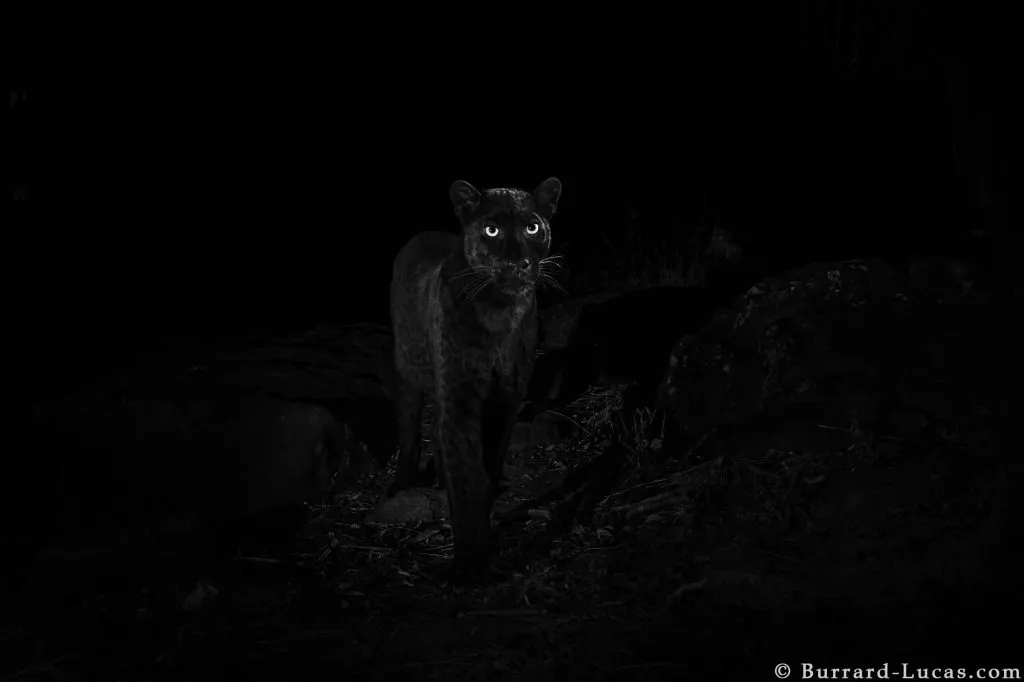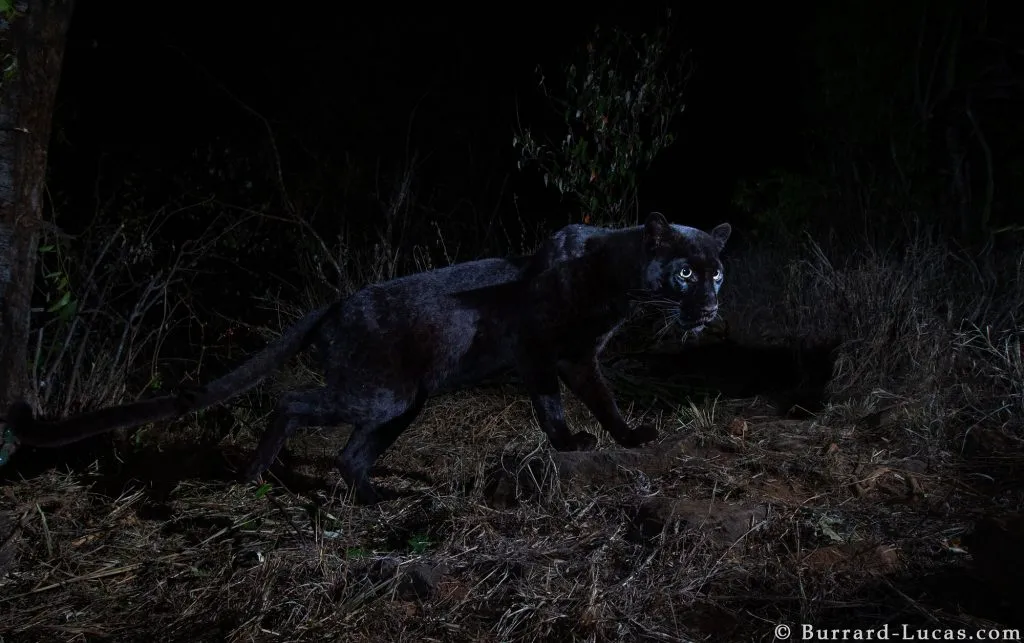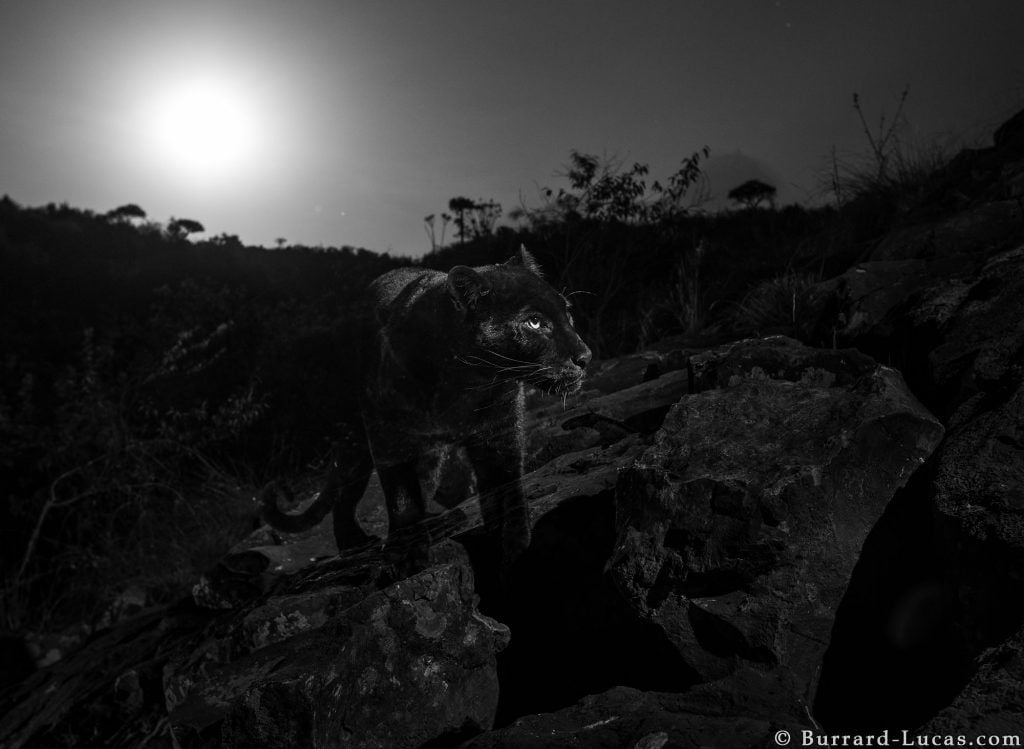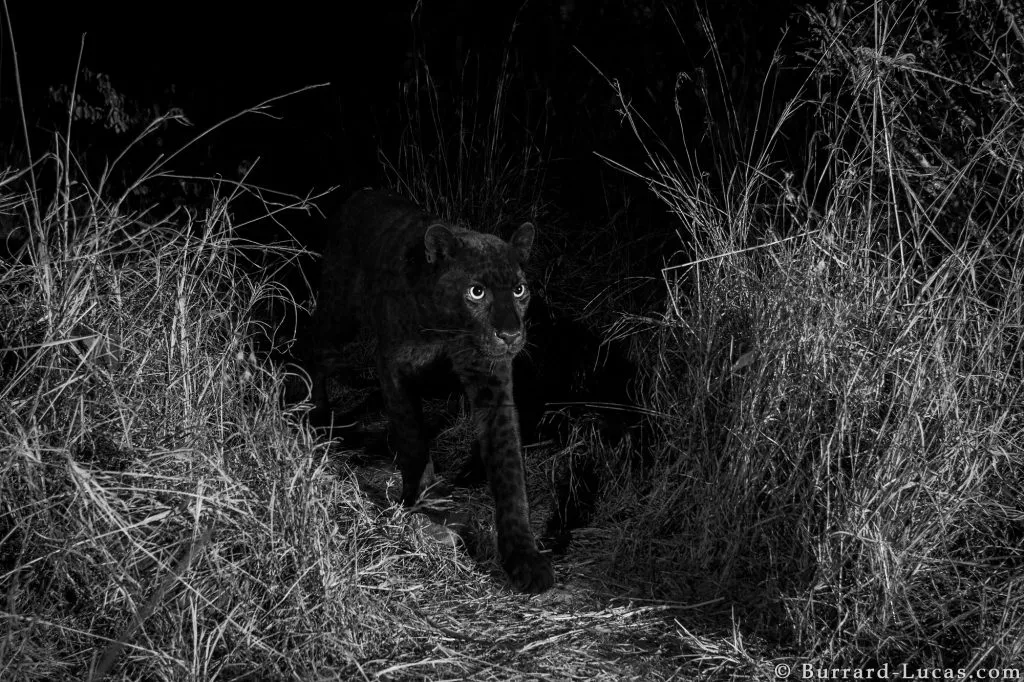See Stunning New Photos of Rare African Black Leopard
Wildlife photographer used camera traps to record high-quality images of the elusive creature, while a team of researchers released separate video footage
When wildlife photographer Will Burrard-Lucas set out to capture a snapshot of the elusive African black leopard, he knew the odds were against him. Sightings of the legendary creature are commonplace in the region, but scientifically confirming the presence of melanism—the condition that makes the big cats black—is tricky to catch on camera. A number of photographs said to portray a black leopard surface on occasion, but there are few that clearly capture the iconic ebony rosette spots needed to confirm melanism.
Still, Burrard-Lucas remained undeterred: As the photographer recounts in a blog post, he teamed up with a local guide to identify potential leopard roaming spots in Kenya’s Laikipia Wilderness Camp. Next, he placed a series of motion-triggered, high-resolution camera traps around the reserve, returning every morning to check the cameras for relevant images.
At first, Burrard-Lucas only managed to capture photos of hyenas. But after several fruitless nights, he writes, “I scrolled through the images on the back of the camera, ... paused and peered at the photograph below in incomprehension, [and saw] a pair of eyes surrounded by inky darkness.”
Over the next several days, the camera traps yielded additional snapshots of the rare black leopard, including one of the cat striding through the wilderness, its tail elongated and pale eyes alert, and another of the animal standing in front of a setting full moon.
According to NPR’s Merrit Kennedy, a team of researchers from the San Diego Zoo Global recently announced a series of similar—but separate—black leopard sightings in Laikipa County. The scientists’ findings, newly published in the African Journal of Ecology, revolve around camera footage captured between February and April 2018.
As the researchers report in the study, eight cameras placed by water sources and animal trails across Laikipia’s Loisaba Conservancy recorded five videos of a juvenile female black leopard. Four of these five clips portray the leopard roaming alone at night, while the sole daytime footage features the leopard following a spotted adult female that may be her mother.
“We’ve heard reports of black leopards living here in Kenya, but high-quality footage or imagery to support these observations has always been missing,” study lead author Nicholas Pilfold says in a statement.
The new images, in conjunction with a recently revealed May 2007 photograph of a black leopard shot at the Ol Ari Nyiro Conservancy in Laikipia, “confirm the existence of black leopard[s] in Africa,” according to the study. The 2007 snapshot, which came to light following news of the San Diego Zoo Global team’s findings, further suggests the unusual creatures are an “established phenomenon” in Laikipia County.
Globally, black leopards—also known as melanistic leopards, since they owe their dark coloring to the pigment melanin—represent around 11 percent of the species’ population. As Iliana Magra explains for The New York Times, the majority of these dark leopards are found in the tropics of Southeast Asia. But thanks to the recent study, as well as Burrard-Lucas’ photography, researchers now know the animals are capable of thriving in semiarid climates, too.

Significantly, the Washington Post’s Reis Thebault and Alex Horton point out, several news outlets initially touted the findings as the first sightings or photographs of the African black leopard in 100 years. In actuality, the pair writes, a Kenyan photojournalist named Phoebe Okall photographed a black leopard at the Ol Jogi Conservancy in 2013. The aforementioned 2007 image also predates the new crop of photographs, and localized reports of black leopard sightings have been pouring in for decades. One of the earliest scientifically confirmed photos of the dark wildcat was taken in Addis Ababa, Ethiopia, in 1909, Jason G. Goldman reports for National Geographic.
According to Thebault and Horton, the San Diego researchers’ images are simply the first to show that black leopards, despite their seemingly monochrome coloring, boast the same “iconic rosette patterns” seen amongst their lighter-colored counterparts. This phenomenon is difficult to observe during the day, but as the zoo’s statement notes, infrared night photography managed to capture the creature’s characteristic spots.
In an interview with NPR’s Kennedy, Pilfold notes that black leopards are actually a type of black panther, as the term simply refers to any black big cat. Interestingly, the animals spotlighted by the new photographs were actually seen near the East African setting of Marvel Comics’ fictional country of Wakanda, home of the Black Panther superhero character.
Pilfold concludes, “The fictional country of Wakanda where Black Panther ... is meant to be, in the Marvel universe, ... [is] not too far away from where we're working.”
/https://tf-cmsv2-smithsonianmag-media.s3.amazonaws.com/accounts/headshot/mellon.png)





/https://tf-cmsv2-smithsonianmag-media.s3.amazonaws.com/accounts/headshot/mellon.png)